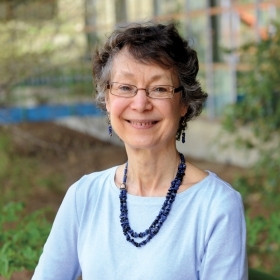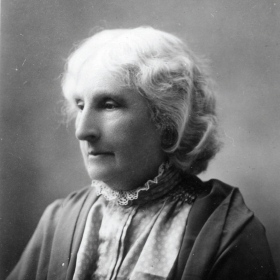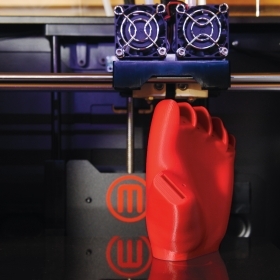Alia Gurtov ’07
When The National Geographic Society’s Explorer-in-Residence Lee Berger put out an urgent call last fall on social media for archaeologists to join him in the Rising Star Expedition, Alia Gurtov ’07 knew she would be...

When The National Geographic Society’s Explorer-in-Residence Lee Berger put out an urgent call last fall on social media for archaeologists to join him in the Rising Star Expedition, Alia Gurtov ’07 knew she would be going. “I don’t get that feeling about many things,” the University of Wisconsin anthropology graduate student says, “but it just felt like something I needed to be on, that I would be on. I just couldn’t imagine my future without it.” Even though Gurtov didn’t have caving experience, she became one of the six experts in human evolution and archaeology to discover the treasure trove of hominin (early human) fossils buried in the Rising Star Cave, 30 meters beneath the South African veldt.
Because the excavation site can be accessed only through extremely narrow passageways, the team had to be composed of slender, agile paleoanthropology experts. In the end, all six picked for the team were women in the early stages of their research careers. Gurtov compares being on the all-women team to her years at Wellesley. She says of the expedition, “There was no gendered authority—it was a meritocracy. Everyone had their own strengths, and these became evident through working together. Nobody assumed that they were more entitled or more qualified before actually interacting.” The researchers engaged the public imagination immediately by live-tweeting discoveries and streaming video from the caves, allowing the public to follow along with Gurtov and her fellow researchers as they discovered over a thousand pieces of fossilized hominin bones.
As a senior in high school, Gurtov had attended classes at her local community college, where a professor teaching human evolution inspired her to pursue anthropology. At Wellesley, Gurtov was mentored by Professor Phil Kohl in the anthropology department, who encouraged her to apply for research grants to support her senior honors thesis. Those grants enabled her to join a group of excavators for the summer of 2006 in Dmanisi, Georgia, the site of the earliest presence of homo erectus outside Africa. Gurtov still remembers digging out a bone and a stone tool on her very first day excavating there.
“I loved it, because it was 40 hours of manual labor, but it was intellectual manual labor,” she says, describing the balance she has discovered in archaeology. For her dissertation, she is trying to prove the usefulness of studying microscopic scratches in the tooth enamel of animals killed by hunters in order to determine what their season of death was. This dental evidence may reveal our ancestors’ cognitive and behavioral flexibility in response to seasonal shifts. While her research deals with Paleolithic weather patterns, Gurtov hopes this will also help us understand how humans might adapt to changing climate conditions in the present.
Gurtov’s work with the Rising Star Expedition is continuing, as well. She has already returned to explore a new, neighboring cave and to continue processing last fall’s finds. In May, Gurtov was to participate in a collaborative workshop intended to support the careers of young scientists by helping them publish major findings from the Rising Star Expedition. She envisions a career path that melds teaching and research, continuing the public engagement that she’s experienced as part of the Rising Star Expedition.
The anthropologist says, “I love to communicate what I’ve learned and what I’ve been able to synthesize to others. I do believe that outreach is fundamental in our discipline.” Her excitement about the bones of our ancestors, and what they tell us about our past and our future, is palpable, and irresistible.


